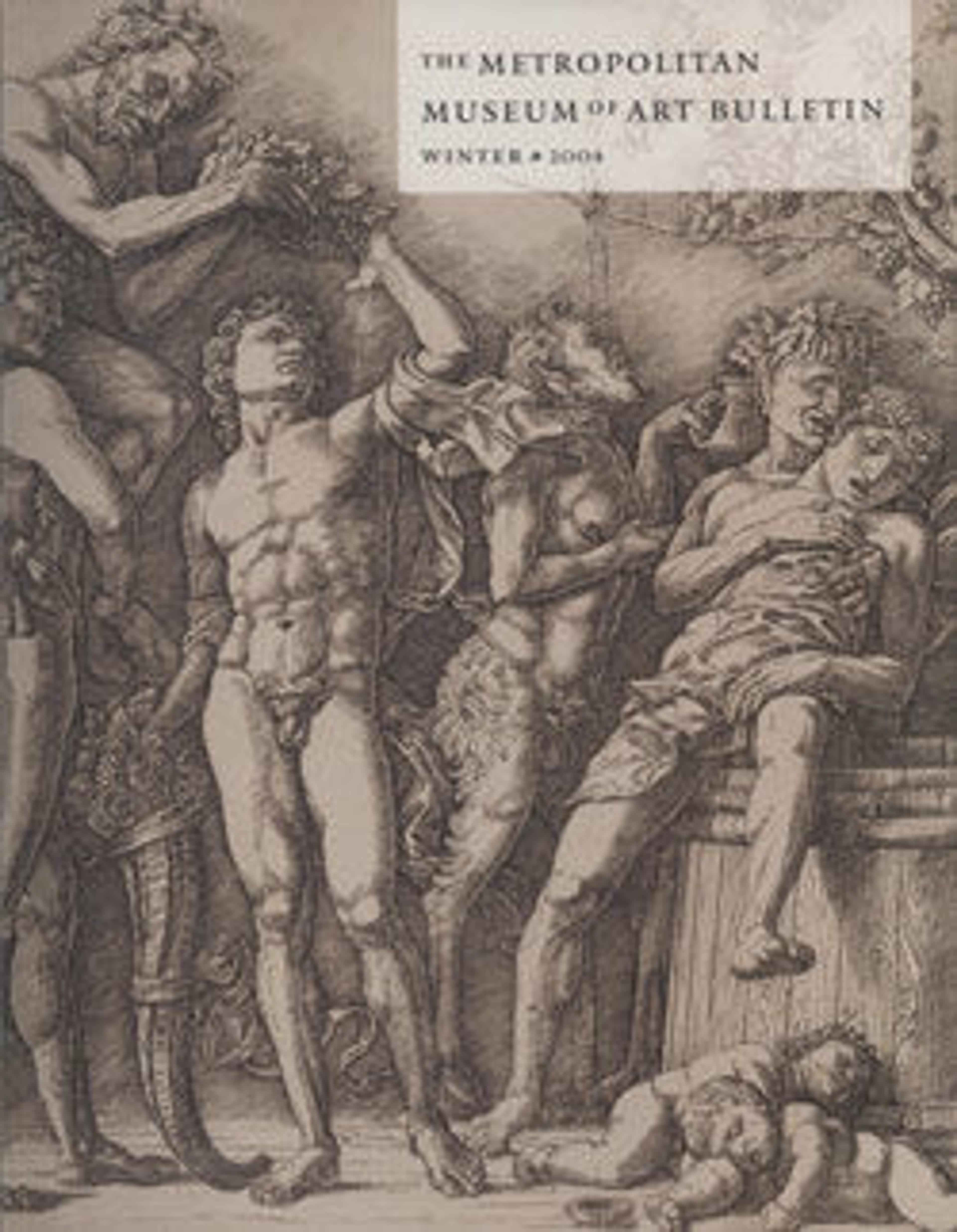Orpheus and Eurydice
Unable to keep his promise not to look back until they reached the light of day, Orpheus lost Eurydice a second time. Agostino depicts the dramatic moment when Orpheus, throwing aside his instrument, tries to pull his love free of the flames of Hades. Ovid describes Orpheus vainly reaching out for her, grasping nothing but empty air (Metamorphoses 10.58–59), and Virgil, in the Georgics (4.498), writes of Eurydice stretching 'strengthless hands' toward Orpheus. Close examination reveals that the two figures do not quite touch each other—this elusive grasp adds erotic tension as well as pathos to the subject.
Although this is a legitimate mythological subject, with considerable narrative interest, it is generally thought to belong to the set of fifteen small engravings characterized by suggestive subjects—ranging from groupings of attractive nudes to genuinely lewd depictions—and known as the Lascivie. This series of engravings, of Agostino's own invention, were carried out in a different technique from his reproductive prints, and instead resemble quickly executed pen sketches. Eight copies after of the Orpheus and Eurydice are known, suggesting that this was the most popular of the Lascivie series.
Although this is a legitimate mythological subject, with considerable narrative interest, it is generally thought to belong to the set of fifteen small engravings characterized by suggestive subjects—ranging from groupings of attractive nudes to genuinely lewd depictions—and known as the Lascivie. This series of engravings, of Agostino's own invention, were carried out in a different technique from his reproductive prints, and instead resemble quickly executed pen sketches. Eight copies after of the Orpheus and Eurydice are known, suggesting that this was the most popular of the Lascivie series.
Artwork Details
- Title: Orpheus and Eurydice
- Artist: Agostino Carracci (Italian, Bologna 1557–1602 Parma)
- Date: ca. 1590–95
- Medium: Engraving, second state
- Dimensions: 5 1/2 x 4 in. (14 x 10.2 cm) trimmed to the platemark
- Classification: Prints
- Credit Line: Gift of Henry Walters, 1917
- Object Number: 17.37.170
- Curatorial Department: Drawings and Prints
More Artwork
Research Resources
The Met provides unparalleled resources for research and welcomes an international community of students and scholars. The Met's Open Access API is where creators and researchers can connect to the The Met collection. Open Access data and public domain images are available for unrestricted commercial and noncommercial use without permission or fee.
To request images under copyright and other restrictions, please use this Image Request form.
Feedback
We continue to research and examine historical and cultural context for objects in The Met collection. If you have comments or questions about this object record, please contact us using the form below. The Museum looks forward to receiving your comments.
